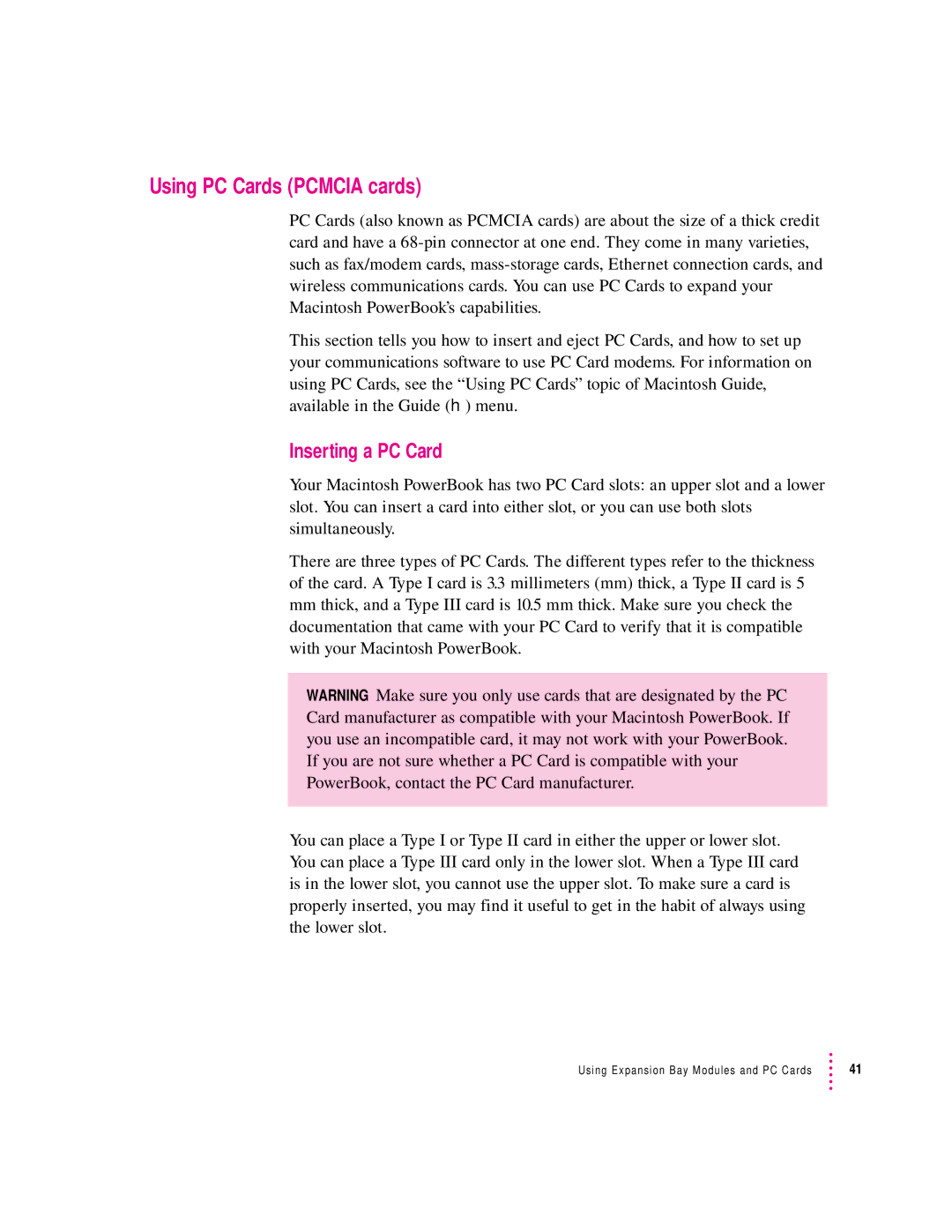
Using PC Cards (PCMCIA cards)
PC Cards (also known as PCMCIA cards) are about the size of a thick credit card and have a
This section tells you how to insert and eject PC Cards, and how to set up your communications software to use PC Card modems. For information on using PC Cards, see the “Using PC Cards” topic of Macintosh Guide, available in the Guide (h) menu.
Inserting a PC Card
Your Macintosh PowerBook has two PC Card slots: an upper slot and a lower slot. You can insert a card into either slot, or you can use both slots simultaneously.
There are three types of PC Cards. The different types refer to the thickness of the card. A Type I card is 3.3 millimeters (mm) thick, a Type II card is 5
mmthick, and a Type III card is 10.5 mm thick. Make sure you check the documentation that came with your PC Card to verify that it is compatible with your Macintosh PowerBook.
WARNING Make sure you only use cards that are designated by the PC Card manufacturer as compatible with your Macintosh PowerBook. If you use an incompatible card, it may not work with your PowerBook. If you are not sure whether a PC Card is compatible with your PowerBook, contact the PC Card manufacturer.
You can place a Type I or Type II card in either the upper or lower slot. You can place a Type III card only in the lower slot. When a Type III card is in the lower slot, you cannot use the upper slot. To make sure a card is properly inserted, you may find it useful to get in the habit of always using the lower slot.
Using Expansion Bay Modules and PC Cards | 41 |
